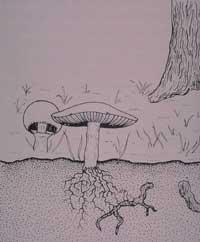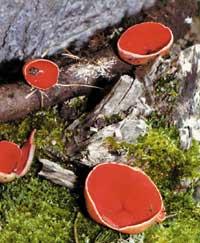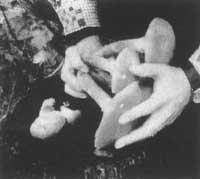Truffle: black gold
2001/04/01 Imaz Amiano, Eneko - Elhuyar Zientziaren Komunikazioa Iturria: Elhuyar aldizkaria
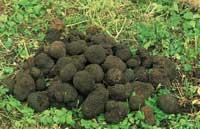
Almost all high level cooks have some plate with truffles in the menu. Yes, they are valued from 100,000 pesetas per kilo (about 4,000 pounds) to 150,000 sts. or are paying more than 6,000 pounds for the bad year). The market of Truffles is almost hidden. In fact, the treatments are done in bars, portals, etc., without seeing the truffles and in places quite far from the sale, and many times in small hours. Truffle or white truffle (Tuber magnatum) is the most appreciated of all species (800,000 pts.) or 32,000 pounds), but the most used is the black truffle (T. melanosporum), the second of the list and the Perigord, so praised by the French.
In view of the price mentioned, we can think that people have tried to sow and collect in a controlled way. This requires a good knowledge of the characteristics, cycle and needs of truffles. The most studied species is the black truffle. Truffles are shaped like tubers and are collected buried, but in reality they are fungi of the Ascomycotin class. At first, as with other fungi, some things of their biology were unknown, which only increased the "mystery" of truffles. However, over the years, research has proliferated and today almost everything related to the truffle cycle is known.
Vegetative body of the Deep Mycelium, usually within the substrate. The donors of fruits of the body from the mycelia are called mushrooms; some are also called fungi. Mikorriza Strong association formed by the roots of a plant and the hifes of a fungus. Exchange of food through mycorrhiza. When the fungus is attached to the root, it is said that the plant is micorrized. |
For example, we know what the biological cycle of Tuber genus is like. In spring the spores cool and the mycelium begins to develop. The new mycorrhizae or mycorrhizal activity begin in spring. Through the mycorrhizae, a physiological exchange takes place between the tree or shrub and the fungus, forming other species of fungi. From these mycorrhizas new hyphae will be created and from these last ones will emerge, towards May, primordio or alevines.
In most cases they are abundant to cope with summer (heat and dry weather can damage many of them). With the arrival of the summer, the activity is interrupted and resumes in autumn. If the time of July and August has been adequate, the surviving hasikis will grow, evolve and become truffle or truffle for autumn. In winter, between December and March, these truffles ripen and by March the spores are released to be dispersed by insects.
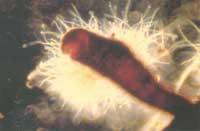
On many occasions, around the month of August, the most steep or small truffles are unearthed, often with special shapes and shapes. That is why many initiate the identification and designation of new species, understanding that all truffles known so far were underground.
Therefore, what is eaten, as in the rest of the mushrooms, is the fruit of the fungus. Unlike the rest of the mushrooms we eat, the fruits of the genus Tuber develop under soil. That is why the dogs raised are used to find appreciated specimens (fewer and fewer pigs are used). However, sometimes its location may be externally suspected. In fact, the place where the mycelium is well developed is "burned" and around the mycorrhized tree or shrub hardly grow herbs. However, the presence of mycelia does not indicate the presence of truffle grains, so it is preferable to use animals instead of drilling the soil and destroying the mycelia. When the forest is relatively closed, the grass is reduced in the soil and the separation of the "burned" areas is difficult.
Where do truffles grow?
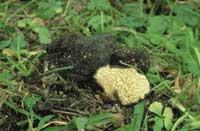
Truffles, in general, grow in European Mediterranean climate zones. Black truffle, in particular, grows between parallels 40º and 47º, especially in Portugal, Spain, France, Croatia, Bosnia-Herzegovina and Yugoslavia. However, it has also been cited in countries such as Euskal Herria, Switzerland, Germany, Hungary or Bulgaria. They grow in our country, Navarre and Alava.
Black truffle grows at altitudes between 100 and 1,000 meters (usually between 100 and 600 meters), in temperate-humid Mediterranean climate or subhumid cold. Annual precipitation of 600-900 mm to complete your cycle. In spring, when beginners are forming, it takes at least 50 mm and in July-August 100 mm in total, so they do not miss the young. All research indicates that summer is a critical time, so in the plantations irrigation systems are usually installed. As for the temperature, the average of the warmest month ranges from 20-22ºC. The earth must be calcareous, especially mesozoic secondary. The black truffle grows between 10 and 40 cm deep.
Plantations Plantations Plantations Plantations Plantations
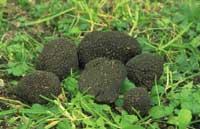
On the one hand, its values in the market and, on the other, the predominance of the scrub in the mountain (due to the fall of the agrarian population and the change of the operating systems) have caused that in some places the production of natural truffles has decreased, many have tried to make truffle plantations and have obtained benefits in some places. However, despite knowing the general conditions required by the black truffle and fulfilling them in the planting area, it is not possible to know what will happen, since it is not known to what extent the hifa gives or does not give the truffle. Since the cycle is annual, the factors that influence fungi are several. In addition, by forming mycorrhizae with trees and shrubs, one can think that their state will also influence.
In the mycorrhizations made on earth, sometimes the mycorrhization of the trees usually rejects and it is difficult to predict whether they will succeed. However, at present all trees change previously micorrized and success has increased. Even more so when irrigation systems have been installed in the plantations for the driest periods. The micorrization and artificial growth of the white truffle remains unachieved.
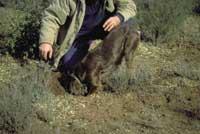
In the plantations carried out in Navarre have been used oaks, complainigals, oaks and hazelnuts, although other species can also be micorrized. The trees are already planted micorrized. It has been found that it is not convenient that in the plot conditioned for planting there are forest trees previously, since the mycorrhized fungi can still be present, and that in most cases they are more competitive than the genus Tuber. It is more appropriate that there are cereals and legumes previously; the vineyards and/or fruit trees do not harm.
In Navarre they have been tested on the mountains of Lóquiz and Alaitz, obtaining an orderly result. In Alava it has also been tried and good results have been obtained. A Navarra company has 600 hectares of land in Soria, the largest in the world, with good results, even better since the irrigation system was installed. Last year 45,000 kilos were collected.
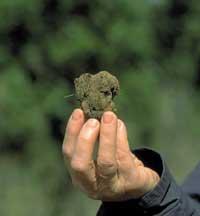
Although in general we know quite a lot about the truffle cycle, the investigations go on and some are very concrete. In a study with samples from France and Italy, for example, it has been observed that the genetic variability of black truffle is very reduced (probably due to the last glaciation), so the varieties of form and flavor that have been mentioned are due to the soil or to the climate.
It is necessary to see what the investigations contribute and, in passing, if the truffles serve to put them at a price that we can all try. And of course, because in some places the T is being sold. Indicum, a black truffle of worse quality. For the price of the latter.

Gai honi buruzko eduki gehiago
Elhuyarrek garatutako teknologia




